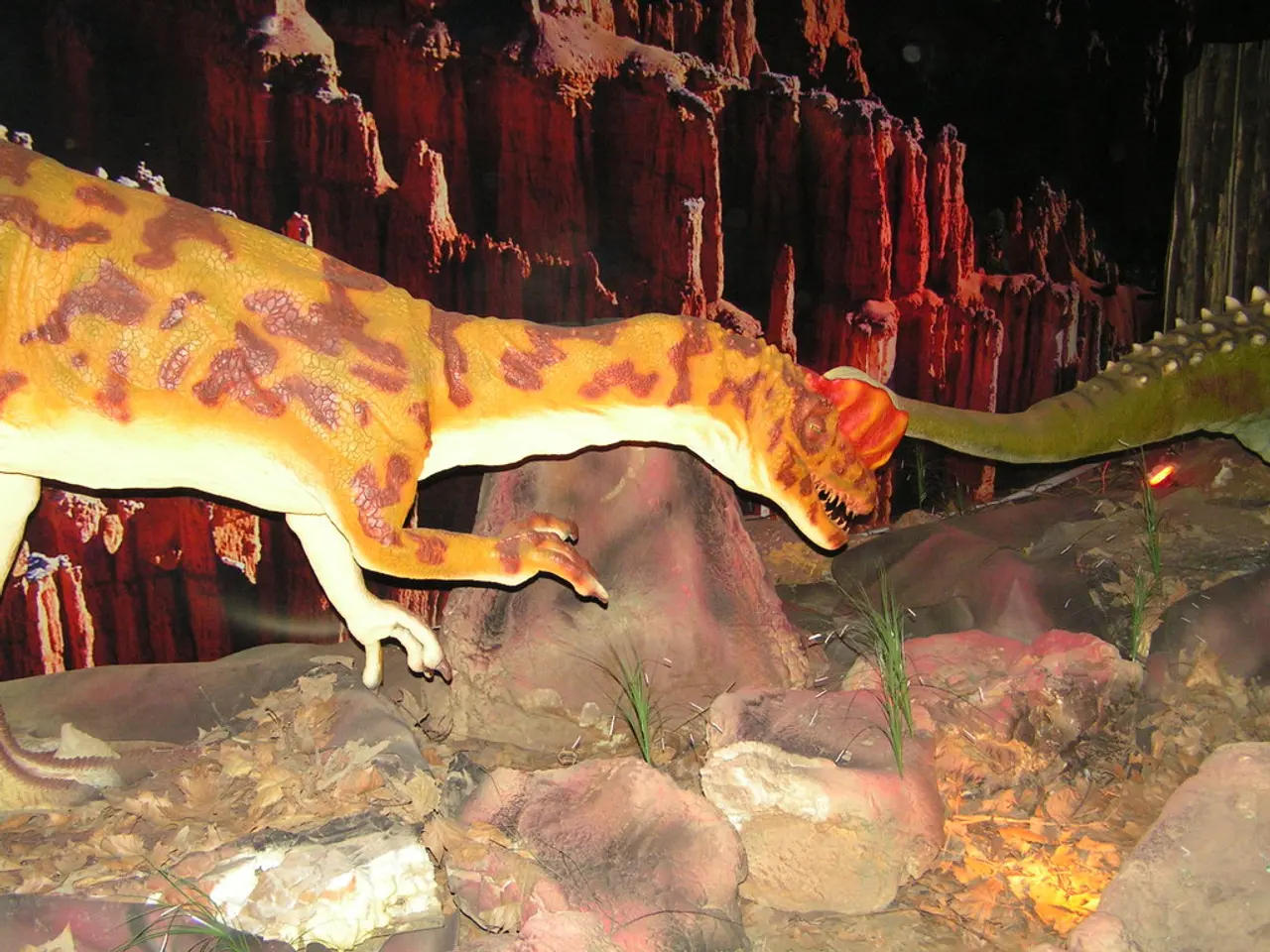The True Appearance of Dinosaur Eggs Revealed
In the realm of prehistoric discoveries, few finds have captured the imagination quite like dinosaur eggs. These relics of a bygone era offer a fascinating glimpse into the lives of creatures that once roamed the Earth millions of years ago.
Dinosaurs eggs, it seems, were as diverse as the dinosaurs themselves. Fossilised specimens have been discovered in various sizes and shapes, ranging from spherical and oval to elongated forms. Some are as small as a few centimeters, while others stretch over 30 centimeters in length. The colours of these eggs were equally diverse, with blues, reds, whites, tans, browns, greens, as well as spotted and speckled patterns, all adding to their captivating allure.
The study of dinosaur eggs is aided by their genetic relationship with birds. The genetic kinship between extinct dinosaurs and modern birds allows scientists to infer some aspects of dinosaur egg appearances. A 2018 article in Nature, for instance, suggested that theropod dinosaurs had egg coloration similar to modern bird eggs, with various colours and patterns.
However, the appearance of dinosaur eggs is largely contested. The fossil record often lacks traces of external dinosaur structures, making it difficult to definitively say what these eggs looked like. DNA analysis can be used to determine the types of eggs that dinosaurs laid, but even this method has its limitations.
Despite these challenges, fossil discoveries have provided clear evidence of other external dinosaur structures. Fossilised dinosaur eggs have offered insights into the differences in dinosaur and bird egg shapes and sizes. For example, the remains of dinosaur eggs are notably different from bird eggs, reflecting the distinct characteristics of the two groups.
It's worth noting that dinosaurs, birds, reptiles, and mammals are all part of a larger group known as amniotes. This term refers to vertebrates whose embryos grow within a closed membrane, setting them apart from other vertebrates such as fish and frogs whose eggs are not enclosed. Amniote eggs are distinctly different from those of non-amniotes, with the former being harder and more durable, providing better protection for the developing embryo.
The adaptation that gives bird eggs their unique colouration was also present in theropod dinosaurs. This suggests that the vibrant colours and patterns found in modern bird eggs may have been a feature of their dinosaur ancestors as well.
As we continue to uncover more about dinosaur eggs, we're not just learning about the past. We're also gaining a deeper understanding of the evolutionary links between dinosaurs and birds, and the common ancestry that connects dinosaurs, birds, reptiles, and mammals.
In the end, the study of dinosaur eggs remains a captivating and ongoing quest. Each new discovery brings us one step closer to understanding the lives of these magnificent creatures, and the world they once inhabited. The remnants of dinosaur eggs, elusive as they may be, continue to reveal their secrets, offering us a window into the past and a reminder of the wonders that still await us in the realm of prehistoric discoveries.
Read also:
- Peptide YY (PYY): Exploring its Role in Appetite Suppression, Intestinal Health, and Cognitive Links
- Toddler Health: Rotavirus Signs, Origins, and Potential Complications
- Digestive issues and heart discomfort: Root causes and associated health conditions
- House Infernos: Deadly Hazards Surpassing the Flames








